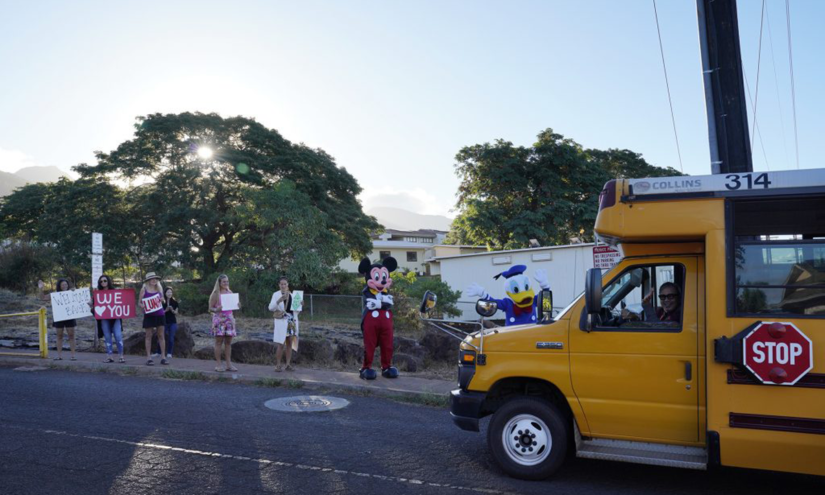During this summer, a team of students from MIT embarked on a journey to the sou …
Legislators Demand Heightened Safety Measures for Lahaina Schools
Emma Wordsmith

The Hawaii Department of Education is under pressure to address the concerns of the community regarding fire preparedness and health precautions at Lahaina’s reopened school campuses. One major concern raised is the lack of transport at Lahainaluna High in the event of a mass evacuation.
The House Working Group on Schools, which was formed in response to the Aug. 8 wildfires, heard public comments on its draft report, which provides recommendations for improving fire and disaster preparedness in Hawaii schools. The final version of the report will be released next month and will inform policy priorities for the upcoming legislative session in 2024.
Last month, Princess Nahienaena Elementary, Lahaina Intermediate, and Lahainaluna High reopened despite concerns from the community about potential contamination from toxic ash in the burn zone nearby. The Department of Education conducted extensive testing of air quality, water, and soil, and determined that it was safe for students to return.
Princess Nahienaena’s campus is also accommodating students and faculty from King Kamehameha III Elementary, which was lost in the wildfires.
According to deputy superintendent Tammi Oyadomari-Chun, the four Lahaina schools currently have over 2,000 students enrolled, which is approximately 1,000 fewer than at the beginning of the year. Many students have transferred to other public schools in Maui or enrolled in private schools across the state.
Concerns were previously raised by parents about the limited access to the three Lahaina campuses, as there is only one road in and out. In response, the Department of Education and Department of Transportation built an emergency access route just before the schools reopened. The quick response from the DOE was commended by Justin Woodson, co-chair of the House working group.
However, Woodson questioned the schools’ ability to respond to future disasters. The draft report recommends that emergency action plans be made publicly available, but DOE deputy superintendent Curt Otaguro stated that the plans contain sensitive information and will not be released at this time. Otaguro mentioned that the department may reconsider and disclose evacuation plans in the event of a fire.
Representatives also expressed concern about the students’ ability to evacuate in case of an emergency. Some schools, like Lahainaluna High, do not have buses on campus for mass evacuations. Otaguro acknowledged the issue and stated that the DOE is exploring options for providing transportation during a mass evacuation. He mentioned that personal vehicles were used to evacuate boarders during the Aug. 8 wildfires, but the school has since acquired transportation for off-campus evacuation in emergencies.
Parents in Lahaina have been closely monitoring air quality due to concerns about heavy winds spreading toxic dust across the campuses. Lavinia Tuavao-Tupou, a senior at Lahainaluna High, mentioned that many students did not attend school during a red flag warning. Otaguro explained that air quality monitors can be sensitive and may fluctuate due to harmless activities on campus, but the DOE could provide more communication to families regarding unexpected changes in air quality readings throughout the day.
If air quality significantly deteriorates, some Lahaina classrooms will need to be retrofitted with air conditioning to enable students to shelter in place. Otaguro acknowledged that this is an ongoing project.
In addition to the concerns about fire preparedness, the DOE must also address the housing insecurity of Lahaina students and teachers. Almost half of the students who returned to the reopened schools had former home addresses that were within the burn zone. The DOE will continue to provide free breakfast and lunch to Lahaina students for the rest of the school year, supported by grants from the Bezos Family Foundation and the Marriott Foundation.
Gary Kanamori, principal at Princess Nahienaena Elementary, emphasized the importance of free meals in helping families transition back to school and expressed confidence in the community’s ability to rebuild and thrive.
Civil Beat’s education reporting is made possible by a grant from Chamberlin Family Philanthropy.


